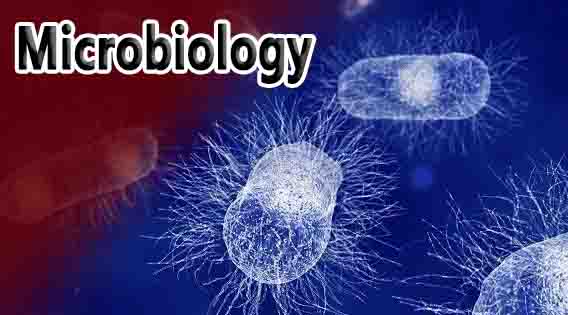Microbiology Definition
Microbiology is the study of microscopic organisms, such as bacteria, fungi, and protists. It also includes the study of viruses, which are not technically classified as living organisms but do contain genetic material.
Microbiology research encompasses all aspects of these microorganisms such as their behavior, evolution, ecology, biochemistry, and physiology, along with the pathology of diseases that they cause.
History of Microbiology
Scientists first observed microorganisms when the first primitive microscopes were developed during the 17th Century. Anton von Leeuwenhoek was the first to publish observations of bacteria, which he viewed by looking at water with a microscope.
In 1684, his drawings of bacteria were published in the Royal Society of London’s journal Philosophical Transactions; these are the first known drawings of bacteria. He was also first to describe protozoa, which are single-celled organisms that include amoebae, and also described yeast, which are fungi, in beer.
Microbiology techniques used to disprove the long-held theory of spontaneous generation in the 19th Century. Spontaneous generation was the belief that living things arose spontaneously from a combination of ingredients, often including ingredients that were inorganic. For example, people believed that mice arose from soiled cloth combined with wheat if the combination was left out to sit.
Although scientists such as Francesco Redi had disproven spontaneous generation as early as the 17th Century, belief in the theory persisted up to the 19th Century. This started to change when Louis Pasteur conducted experiments using microorganisms. He showed that microorganisms could be filtered out of air by using cotton wool, and he was also able to keep liquids sterile for an extended period of time by boiling them in a swan-necked flask.
Other important advancements in the 19th Century included the widespread use of the compound microscope and the development of staining techniques in order to better visualize microorganisms. In addition, people began to realize that microorganisms could cause disease, and did experiments on immunity.
The 20th Century was a time of great advancement for all forms of science, including microbiology. The first vaccines and antibiotics were developed, and the first chemotherapeutic agents were used to treat bacterial diseases such as syphilis.
Deoxyribonucleic acid (DNA) was discovered to be the genetic material of the cell, which opened up the field of genetics research and allowed more recently for sequencing the genomes of microorganisms.
Branches of Microbiology
By Taxonomy
- Bacteriology: the study of bacteria.
- Immunology: the study of the immune system. It looks at the relationships between pathogens such as bacteria and viruses and their hosts.
- Mycology: the study of fungi, such as yeasts and molds.
- Nematology: the study of nematodes (roundworms).
- Parasitology: the study of parasites. Not all parasites are microorganisms, but many are. Protozoa and bacteria can be parasitic; the study of bacterial parasites is usually categorized as part of bacteriology.
- Phycology: the study of algae.
- Protozoology: the study of protozoa, single-celled organisms like amoebae.
- Virology: the study of viruses.
By Type of Research
Microbiology research, like other fields of scientific research, can be subdivided into the categories of pure and applied. Pure (or basic) research is exploratory and conducted in order to better understand a scientific phenomenon, while applied research is based on information gleaned from pure research and used to answer specific questions or solve problems.
Pure microbiology research includes:
- Astromicrobiology: the study of the origin of life on Earth, and the search for extraterrestrial life.
- Evolutionary microbiology: the evolution of microorganisms.
- Cellular microbiology: the study of the structure and function of microbial cells.
- Microbial ecology
- Microbial genetics
- Microbial physiology
- Systems microbiology: mathematical/computational modeling of the activities of microbiological systems.
While applied microbiology research includes:
- Agricultural microbiology: the study of microorganisms that interact with plants and soils.
- Food microbiology: the study of microorganisms that spoil food or cause foodborne illnesses. Can also study how microorganisms are used in food production, such as fermentation of beer.
- Medical microbiology: the study of microorganisms responsible for human disease.
- Microbial biotechnology: using microbes in industrial or consumer products.
- Pharmaceutical microbiology: the study of microorganisms used in pharmaceutical products, such as vaccines and antibiotics.
Microbiology Careers
Most jobs in microbiology require at least a bachelor’s degree. An individual who is interested in microbiology may obtain a bachelor’s degree in biology or microbiology. The courseload is very similar for each of these majors; while a microbiology major may be more specific to the interests of someone who wants to study microbiology, it is also possible to achieve a similar level of specificity in the biology major by taking upper-level microbiology courses.
The biology major may be preferred if one has interests in other subfields of biology, or if he or she is double majoring in biology and in another field. In both the microbiology and biology majors, students must take numerous biology courses and laboratories, and usually they must also take courses in chemistry (including organic), physics, mathematics, and statistics.
With a bachelor’s degree, one can become employed as a research technician in an academic or industry laboratory and provide technical support. One could also become a quality assurance technician in the food, environmental, pharmaceutical, or biotechnology industries, or with some additional training, become a medical technologist.
However, many individuals with bachelor’s degrees in microbiology or biology go on to do further schooling. With a master’s degree in microbiology, an individual may go on to become a laboratory manager/coordinator or a biosafety officer. Further schooling leading to a PhD opens up opportunities in teaching and doing research at a university.
Being a professor requires a PhD. Most heads of research laboratories in industry have PhDs as well. Other high-level careers involving microbiology include becoming a consultant/adviser, administrator, or lab director.

